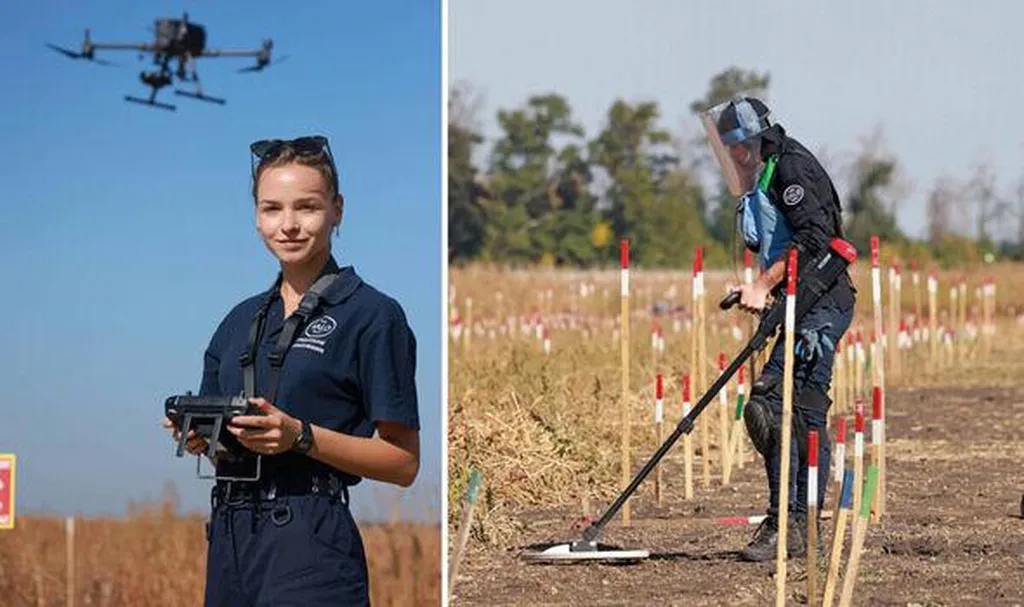In a significant stride towards enhancing landmine detection technologies, researchers from Lviv Polytechnic National University have developed a novel approach that combines magnetic sensing data with advanced neural network architectures. The study, led by Ivan Peleshchak and published in the journal *Електроніка та інформаційні технології* (translated as *Electronics and Information Technologies*), presents a passive landmine recognition system that promises high accuracy and minimal risk of detonation.
Landmine contamination remains a pressing issue in over 60 countries, including Ukraine, where the recovery of agriculture and infrastructure is severely hampered by hidden explosive devices. Traditional methods of landmine detection often involve active sensing techniques that can inadvertently trigger explosions. The new approach, however, utilizes passive magnetic sensing data collected by an FLC-100 sensor, coupled with a Kolmogorov-Arnold Network (KAN), to identify different types of landmines with remarkable precision.
The research team collected a baseline dataset of 338 real measurements, which included sensor voltage, sensor height, and soil type. To balance the dataset, they generated 50 synthetic records for every “soil–mine” pair using a parameterized normal distribution. After normalizing the voltage data and applying one-hot encoding to the soil type and mine classes, the team formed a three-dimensional feature space. Two KAN architectures were evaluated: KAN (3-16-16-4) and KAN (3-64-64-4), both employing cubic B-splines to achieve high-precision mine recognition.
The results were impressive. The KAN (3-16-16-4) model achieved an accuracy of 93.56%, with the main confusion occurring between the “anti-personnel” and “booby-trap” classes. Increasing the number of neurons in each hidden layer to 64 raised the accuracy to 95.59% and eliminated the erroneous assignment of “anti-personnel” mines to the “booby-trap” class. Both networks perfectly distinguished the “no-mine” and “anti-tank” cases, confirming the robustness of spline activations to sensor noise.
“This research demonstrates the potential of Kolmogorov-Arnold neural networks in solving complex real-world problems,” said Ivan Peleshchak, lead author of the study. “The use of cubic B-spline weights not only enhances the accuracy of mine detection but also provides interpretability, allowing us to analyze the contribution of each feature.”
The implications of this research extend beyond landmine detection. The energy sector, particularly in regions affected by conflict, could benefit significantly from this technology. Accurate and safe landmine detection is crucial for the safe and efficient development of energy infrastructure, such as pipelines, power lines, and renewable energy projects. By minimizing the risk of detonation, this technology can facilitate the safe recovery and reconstruction of critical infrastructure, supporting economic development and energy security.
Moreover, the scalability of KANs suggests that this approach could be adapted for other applications requiring high-precision detection and classification, such as environmental monitoring and industrial inspection. The interpretability of spline weights also offers a unique advantage, enabling researchers to understand the underlying factors contributing to detection decisions.
As the world continues to grapple with the legacy of landmines and other explosive devices, innovative technologies like the one developed by Peleshchak and his team offer hope for a safer future. The research published in *Electronics and Information Technologies* not only advances the field of landmine detection but also paves the way for broader applications in various industries, highlighting the transformative potential of advanced neural network architectures.

